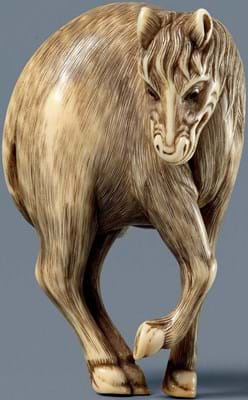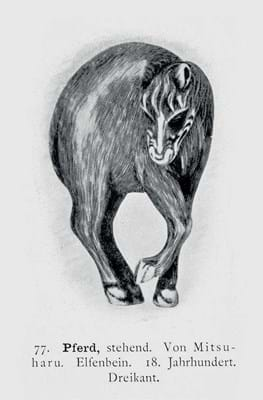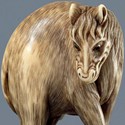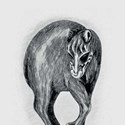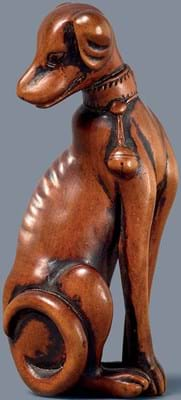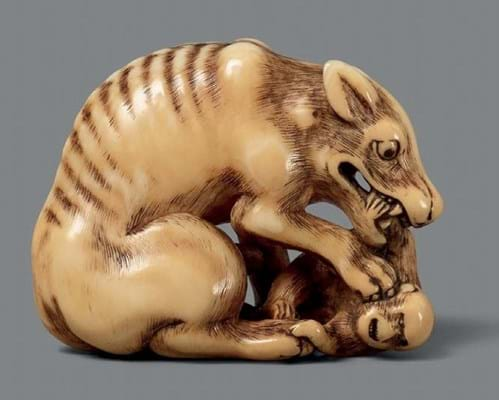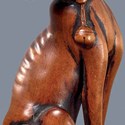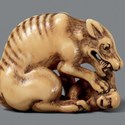While many of their colleagues have focused attention in recent years on Chinese works of art, the auctioneers at Lempertz (25% buyer’s premium) in Cologne always took care not to neglect art from Japan in the regular sales of Asian art.
On June 27, their efforts were well rewarded. The auction of 200 netsuke from the legendary collection of Albert Brockhaus (1855-1921) was a white-glove sale and the premium-inclusive total of just over €858,000 (£766,000) was over four and a half times the sum of the estimates.
Brockhaus, member of a famous publishing family in Leipzig, started collecting netsuke in 1877. The company was best known for its encyclopedias and Brockhaus set about amassing a vast collection, which he catalogued with the same attention to detail.
Each piece was documented on an index card, with information on the artist, the material, provenance, date of purchase and often a drawing of the object itself. This card index was the base for Brockhaus’s seminal publication Netsuke from 1905 and expanded in 1909, which was the first western work on the subject and still considered one of the best.
Big spender
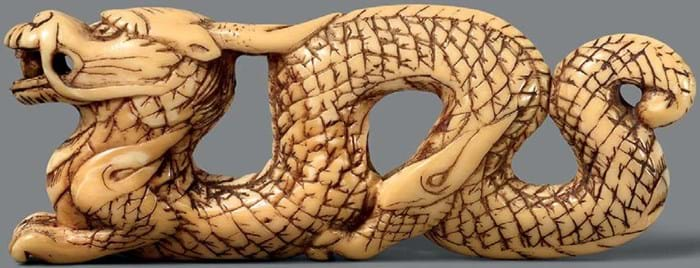
This 3½in (9cm) long, 18th century ivory dragon rose from the guide of €4200-5000 to €18,000 (£16,070) at Lempertz.
Brockhaus was a voracious collector. At the 1913 sale of the British collector Walter L Behrens he acquired 383 of the netsuke on offer. After his death in 1921, the collection remained in Leipzig until the end of the Second World War, when it was transferred to West Germany and stayed in the hands of his descendants.
Over the decades, parts of the collection have come under the hammer. In 1980 Christie’s held a specialist sale in London; however, the majority of pieces were sold by Cologne auctioneer Trudel Klefisch.
She had trained at Lempertz in the 1960s, before setting up on her own in 1972. Brockhaus netsuke figured prominently at her sales in 1981, 1992, 1997, 2002 and 2008. Some pieces came directly from the family; others had passed through the hands of different collectors, before returning to the market.
In 2013 Klefisch closed her auction house and worked freelance as an expert for colleagues. In December last year, she was contacted by two of Brockhaus’ great-granddaughters, who each wanted to sell 100 netsuke from the remaining collection. Klefisch was now responsible for handling the sale at Lempertz – as she put it, “this was a fitting way to mark the end of my career”.
Even given the fact that the netsuke were fresh to the market and had such an illustrious provenance, the response was overwhelming. Among the international bidders were several from France and the UK, but very few from Japan. The majority of buyers were, however, from Germany.
All were in a generous mood: estimates meant little.
A softwood carving of a standing Kirin, once owned by Walter L Behrens, catalogued as possibly 19th century, went from a €700-900 estimate to €19,000 (£16,965); an 18th century ivory dragon from the same source from a €4200-5000 estimate to €18,000 (£16,070), while a 19th century mythological beast changed hands for €23,000 (£20,535), almost 20 times the low estimate. A boxwood greyhound from the 18th century, also ex-Behrens, was sold for €28,000 (£25,000).
Also of 18th century origin was a maritime ivory group depicting two hares jumping over waves, which rose from a €900-1200 estimate to €26,000 (£23,215), going to a German collector.
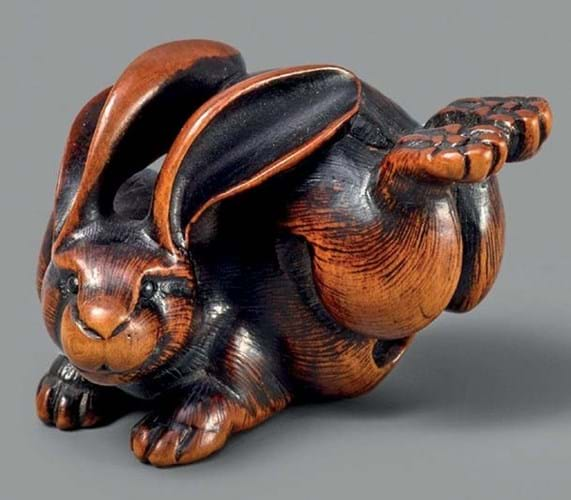
Brockhaus bought this 2in (5cm) wide 19th century boxwood hare, signed Toyomasa, in 1907. It sold to a Canadian collector for €62,000 (£55,360) at Lempertz.
There was even more demand for a figure of a leaping hare, a 19th century boxwood carving, signed by Toyomasa.
Bidding started at €8000 and when the bids slowed down in the upper 40s, the auctioneer did his best and nudged the last competitors upwards. “Yes we can,” he said when the €50,000-mark was passed. In the event, a Canadian collector won the race at €62,000 (£55,360).
The top price of the day was reserved for a mid-18th century ivory carving of a horse from Kyoto, signed Mitsuharu. Sold to a German collector for €80,000 (£71,430), it had the added kudos of being illustrated in Brockhaus’ book from 1905. A copy of the first edition, from a different source, closed the Cologne auction, selling for €2600 (£2320).
£1 = €1.12


